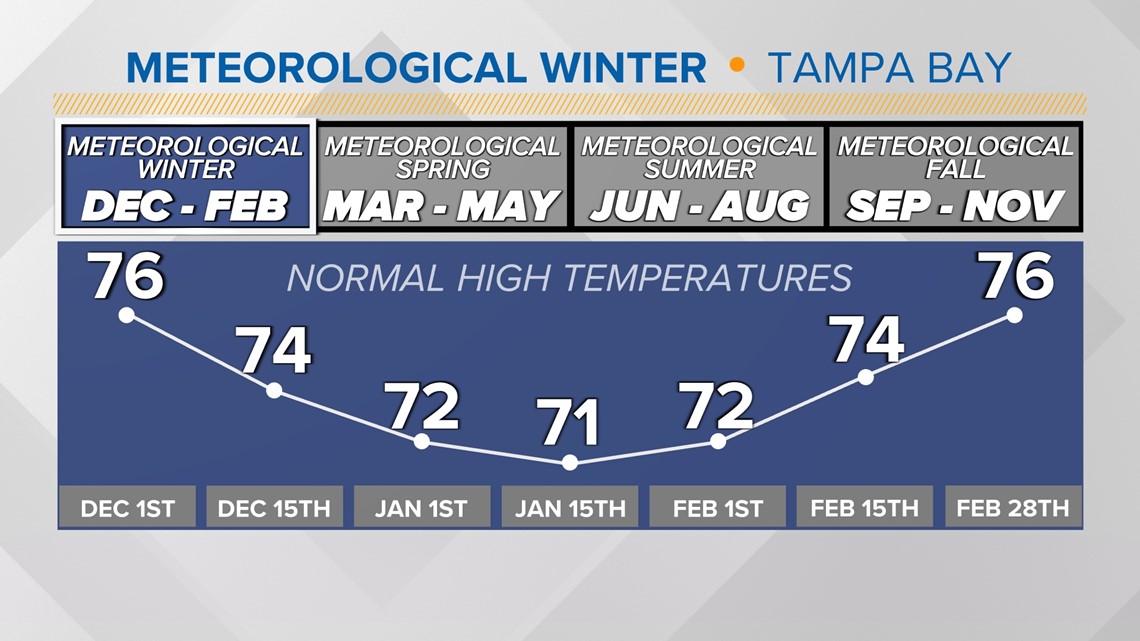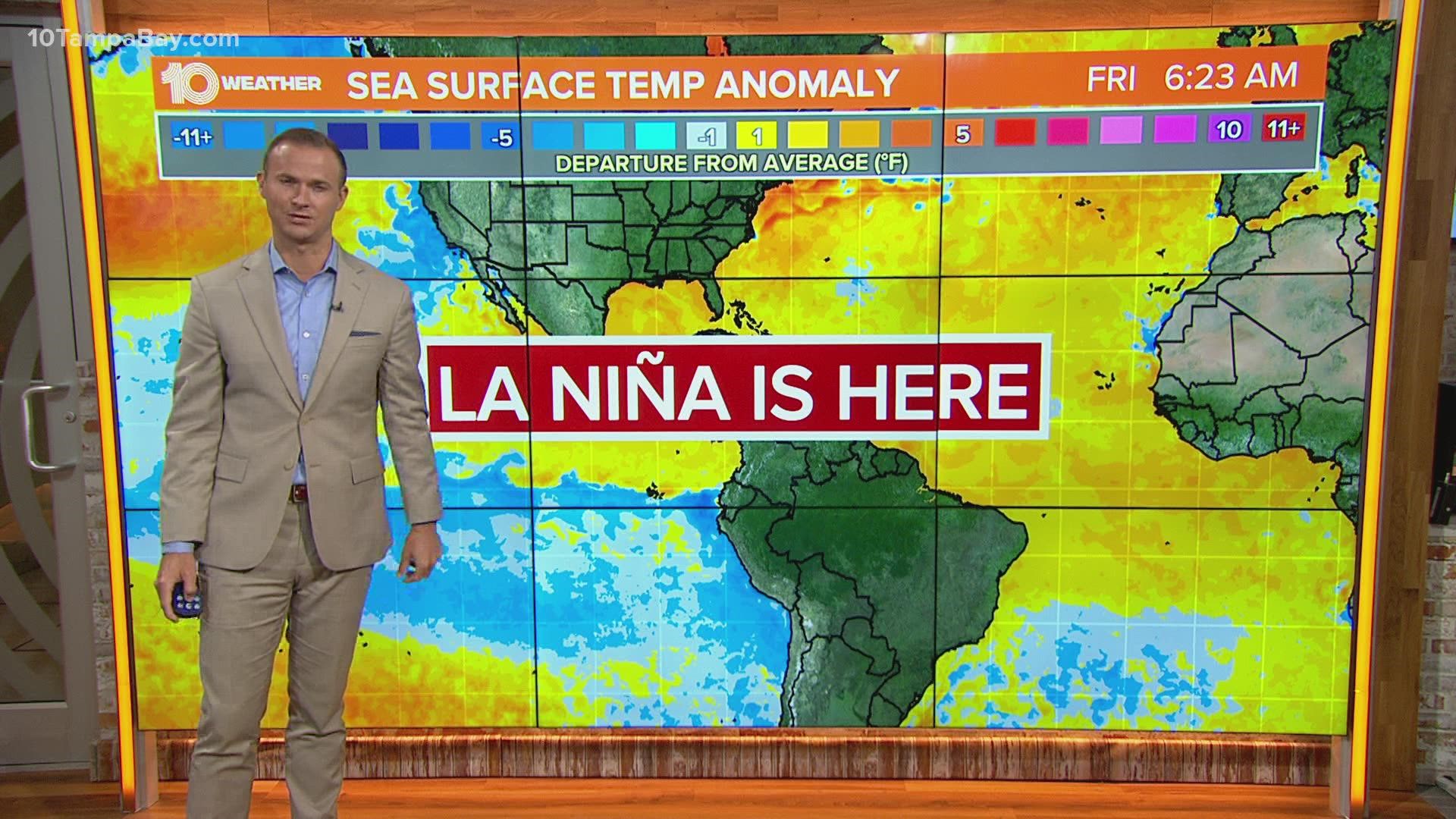ST. PETERSBURG, Fla. — After several months of sitting in the balance between El Niño and La Niña, the National Oceanic and Atmospheric Administration has determined that the balance has tipped — and La Niña has returned.
La Niña is a naturally occurring cool-phase counterpart to the more popular El Niño pattern. La Niña begins when the water in the eastern tropical Pacific cools a certain degree below normal.

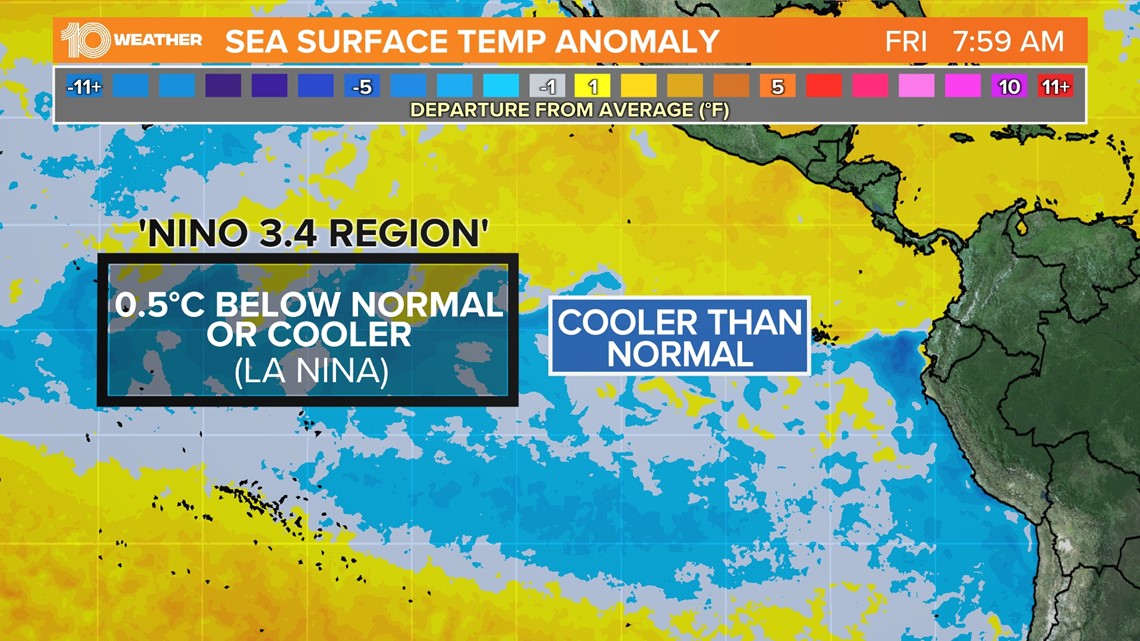
When the waters cool, it cools the air above it and produces a broad sinking motion in the atmosphere. This launches a domino effect that tends to impact large-scale weather patterns around the globe.
As a result, this development gives forecasters insight into generally what can be expected in the months ahead.

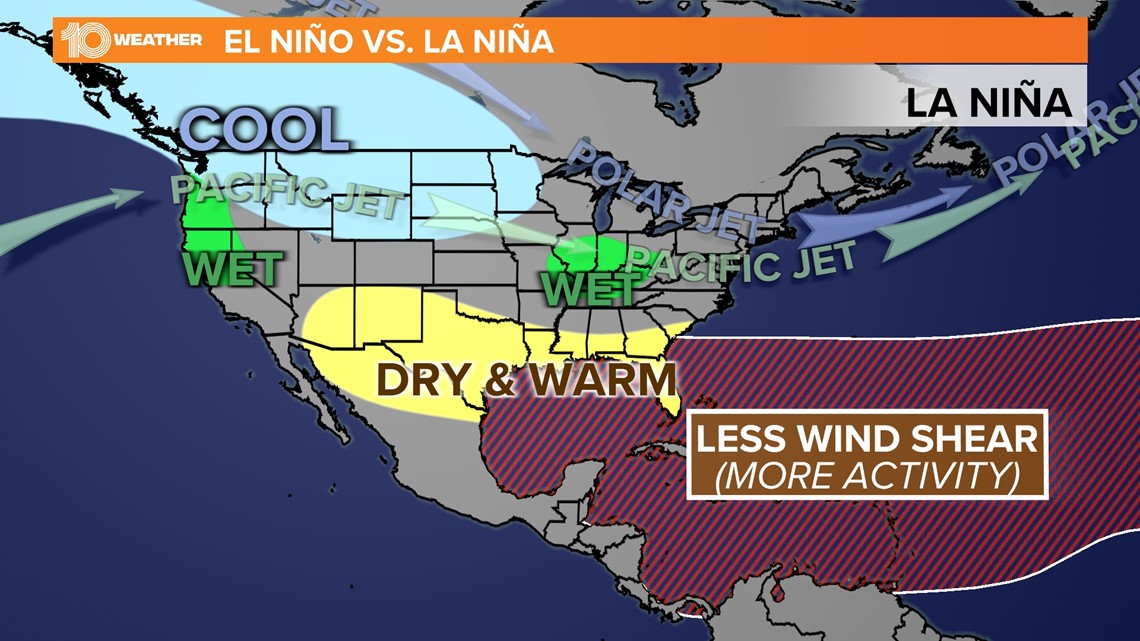
Most immediately, La Niña patterns tend to reduce wind shear across the tropical Atlantic which in turn increases the likelihood of hurricane development. When wind shear prevents thunderstorms associated with developing tropical systems from organizing and gaining strength.
Conversely, the absence of wind shear provides a much more conducive environment for tropical cyclones to develop and thrive. The development of a La Niña pattern is one contributing factor to the above-normal activity in the Atlantic this year.

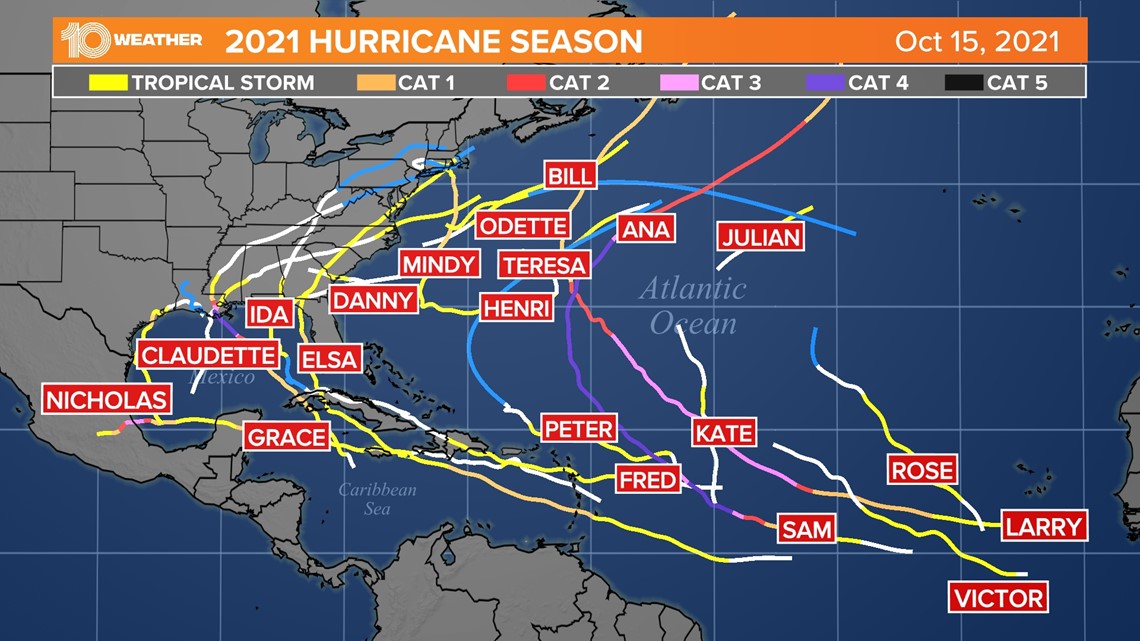
During the wintertime, the La Niña pattern produces a high-pressure system near the Aleutian chain and pushes the polar jet stream to the north over Alaska. This squeezes the polar and Pacific jet together and sends cooler than normal air across the Pacific Northwest and northern Plains.

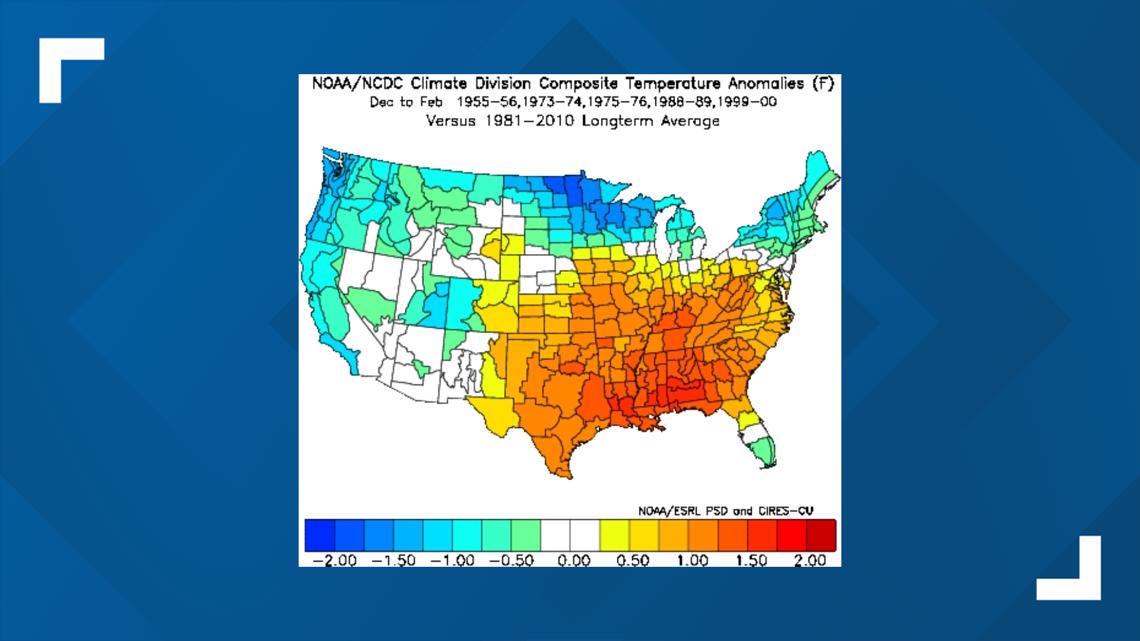
This pattern shift also keeps the northern United States on the wetter side, while the southern states are left generally warm and dry. While this might sound appealing for winter this can also contribute to [more] wildfire concerns, especially into the early spring months.
On the other side of the coin, warmer conditions through the winter months in the south are a nice retreat for the rest of the country.

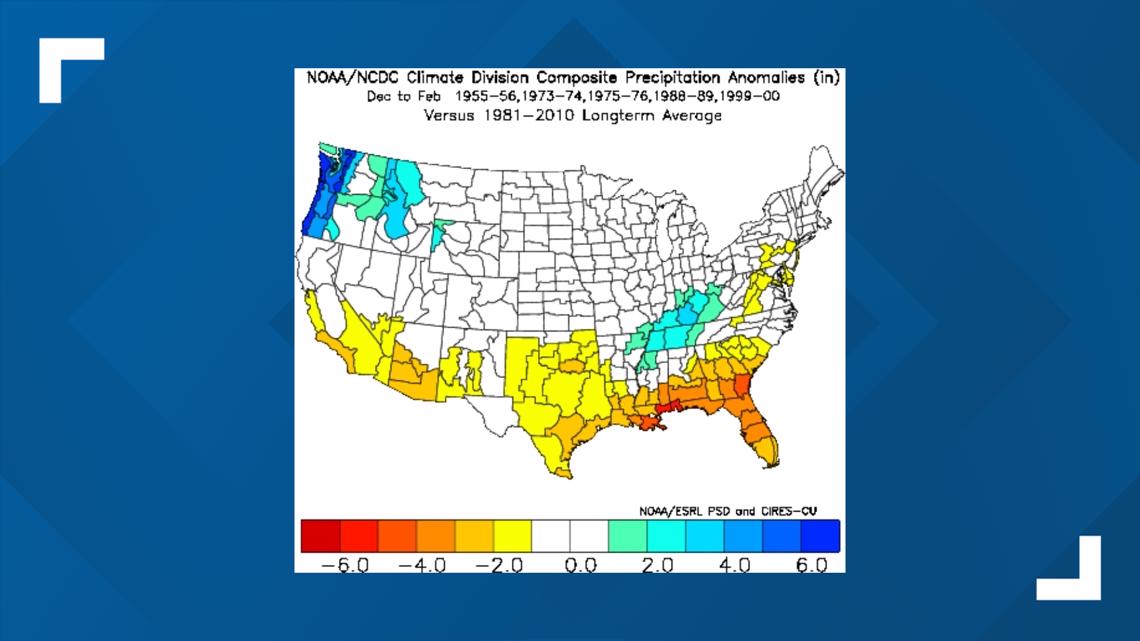
The strength of the La Niña pattern ultimately determines how extreme these "typical" weather conditions will be. La Niña arrived most recently in the fall of 2020 before slipping back into a more neutral phase until recently when it returned to La Niña.
Typically, the El Niño and La Niña patterns will switch back and forth every two to seven years.
Regardless, even a normal winter in Tampa Bay is nice as we ride through the dry season with pleasant conditions. The normal high temperature through the "depths" of winter never drops below 70 degrees.

